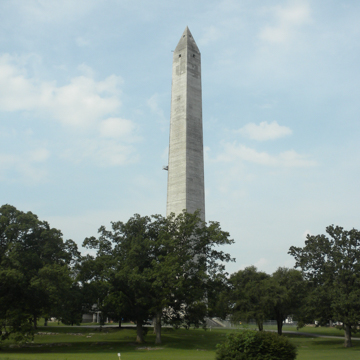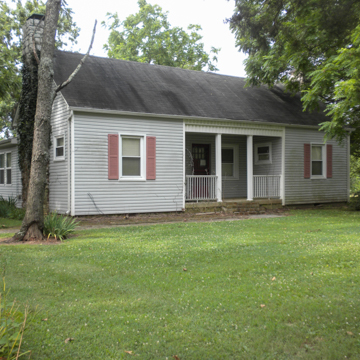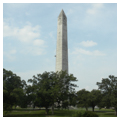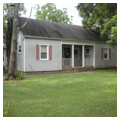Rising 351 feet above rolling farmlands in Fairview is a concrete obelisk marking the birthplace of the first and only president of the Confederate States of America. It is still the tallest concrete obelisk in the world.
It is perhaps ironic, perhaps fitting that both Civil War presidents were born in Kentucky: Jefferson Davis was born in 1808 in a log cabin some 80 miles from the log cabin in which Abraham Lincoln was born the following year. After attending Transylvania College and West Point and serving in the Spanish-American War, Davis went on to become a representative and senator for Mississippi, secretary of war, and finally, president of the Confederate States of America. Although stripped of his American citizenship after the Civil War, Davis was celebrated upon his return to his birthplace in 1875. He died in 1889 and was buried in the Hollywood Cemetery in Richmond, Virginia.
In 1907, while attending a reunion of the Confederate Orphans Brigade, former Confederate General Simon Bolivar Buckner proposed that a monument be erected to Davis at his birthplace. The newly established Jefferson Davis Home Association raised funds to purchase twenty acres of farmland and additional funding came from the United Daughters of the Confederacy and the Kentucky General Assembly. Work was delayed during World War I and costs eventually rose to $200,000.
C.G. Gregg of Louisville designed the obelisk and oversaw its construction. Its foundation reaches 19 feet underground, the base is 35 feet by 35 feet with 10-foot-thick walls at the lower level that taper to two feet at the top. The entire monument is constructed of concrete and is estimated to weigh 1,500,000 tons. The observation room at the top of the obelisk commands views in all directions.
A replica of the log cabin in which Davis was born is a private residence inside the park. Davis was actually born on what is now the site of Bethel Baptist Church just outside the park; according to local tradition, the logs of the original cabin now form the foundation of that structure. This legend runs counter to the story that the Davis birthplace log cabin was exhibited alongside the Lincoln birthplace log cabin at the Tennessee Centennial Exhibition of 1897, after which the logs of the two cabins were jumbled and now together make up the Lincoln log cabin that stands in Hodgenville.
The obelisk was renovated in 1999–2004 and again in 2016. The Jefferson Davis State Historic Site is open to the public during the summer. Its great height makes it easily visible from any direction in this relatively flat Pennyroyal or Pennyrile Plateau region of Kentucky.
References
McIntosh, LouDelle, “Jefferson Davis Monument,” Todd County, Kentucky. National Register of Historic Places Inventory–Nomination Form, 1973. National Park Service, U.S. Department of the Interior, Washington, D.C.

















